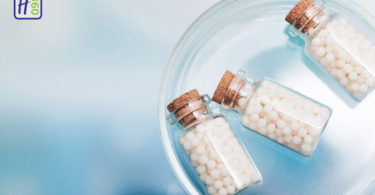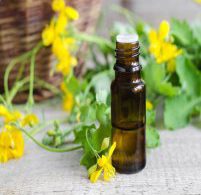“Sexual passion, often combined with jealousy, is intimately related on the one hand to cruelty on the other to affected devoutness.”— Dr. H. Gross.
Hahnemann was the first to compare Belladonna and Rhus tox. in the field of comparative mateira medica in Homoeopathy— such an artistic approach is new to the other therapeutic sciences, where matter rules the dosage in crude from, in which modalities of a drug are totally unknown. So Homoeopathy has a new physiology, a new diagnosis, a new pathology and a new and scientific pharmacology. Text books on the subjects by Gross, Farrington, a paper on Calcarea and Causticum, by Boenninghausen are classics.
When the polychrest remedies developed into complete forms like different personalities, the need for comparison and thorough individualization, became absolutely necessary to employ them successfully with artistry in treating the sick.
There are physicians who cling conveniently only to a couple of keynotes for each remedy and Rademacher prescrihers, who know only the organotrophism in the remedy like Chelidonium for liver diseases. For such easy going and shortcut therapists, comparative materia medica is Greek. In their blissful ignorance, they refuse to benefit from the vast advantages of such fascinating and wonderful treatises.
This author is much benefited by many marvelous observations from the study of comparative text books on materia medica in diagnosing a disease in the clinics long before the ‘functional disease’ manifested into a structural and clinical entity. For instance, it is mentioned that the drugs which produce desire for beer and those which generally cause odourless flatus are at the same time remedies for the liver (Phos., Sul., etc.) The sleep position ‘arms crossed over the head’ usually indicates the liver complaint (Nux v., Puls., Sul. Etc).
The study of comparative materia medica is understanding the laws of nature in the phraseology of Grauvogl. The dynamic and courageous Constantine Hering produced the first trituration of Lachesis and first dilution of alcohol on July 28, 1828.
He published the first batch of cases in 1853. In 1837, the snake poison Lachesis was introduced in materia medica. He laid down a code of conduct into the materia medica according to the Hahnemannian teachings.
The doctrine of alternate medicines, the doctrine of successive medicines and the doctrine of drug relationships are some of the fascinating and serious studies on the subject of comparative materia medica.
To treat chronic disease successfully, a few medicines are needed to a patient and their selection in the given case is not on priori but on the reappearing symptoms or, more so, on the new symptoms as per the Hahnemannian teachings. (Organon, sections 169-170; Chronic Diseases, page 171). For example, after a medicine ceases to improve a case the symptoms reappearing especially, the new symptoms become the principal indications for next selection and one cannot select a remedy without the knowledge of newly manifested symptoms in the patient.
To compare Lachesis with other related and similar remedies is beyond the scope of this author at this juncture. In the language of E.A. Farrington, it is easy to differentiate where remedies diverge; but difficult to nicely discriminate where similar remedies converge until their symptoms are almost identical and yet, just here, individualization is mot needed. Farrington devoted three chapters to the study of Lachesis and many pages in his Comparative Materia Medica. Gross compared seven drugs with Lachesis and six remedies with it.
This author attempts comparisons in only one sphere. Viz. Sexual, where there is a beautiful and lonely symptom, which can be highlighted into rare, strange and peculiar symptom in the drug-pathogenesis of Lachesis, namely the idea of marriage seemed unendurable. This is one of the many beautiful pointers in the Lachesis mental symptoms and yet highly rewarding if it is observed in the patient. Lachesis, Picric acid and Pulsatilla are the remedies taken for comparison. It is not the intention of the author to go into the details about the complete comparisons of the three remedies or thoroughly individualise them. Their relevant indications and related sexual symptoms will be dealt with.
In a nymphomaniac, Lachesis is more indicated than Pulsatilla, but Picric acid is rarely indicated. In the increased sexual passion, the trio is indicated but in an excessive way only Lachesis is indicated; when coupled with violence Pulsatilla does not claim.
All the three are indicated in strong erections but with violence and excess only Picric acid. For frequent erections Pulsatilla is the one. Picric acid is indicated where erections are present without sexual desire but in impotency it is not indicated whereas Lachesis and Pulsatilla have it. If they are troublesome and continued, Lachesis is not indicated, when painful and in the conditions of chordee, Pulsatilla is the one with the morning aggravation. If the erections are incomplete Lachesis alone claims. Mental symptoms from sexual excess are indicated only in Pulsatilla.
Lachesis, Picric acid and Pulsatilla are not indicated for aversion to coition, and where enjoyment is absent in both the sexes and in the diminished sexual desire in the females. Those symptoms do not contraindicate in the selection of them if the other valuable symptoms agree.
When the sexual desire is increased in the female sex all of them are indicated but, if the desire is insatiable, Lachesis is the only remedy. When the desire is increased during menses or during pregnancy Lachesis and Pulsatilla are there. When the sexual desire is violent in the female sex Lachesis is the only one indicated. In menopausal syndrome Lachesis and Pulsatilla vie equally but Lachesis competes more. In general in the ladies when there is aggravation during coition and after none of the three remedies is indicated.
The subject of dreams in the profiles of Lachesis, Picric acid and Pulsatilla is fascinating.
All are present in the amorous dreams, but in the pleasant dreams both Lachesis and Pulsatilla are indicated. Dreams as if pregnant only Picric acid claims. All the three are masturbators. But in onanism Picric acid slips off. In the female sex for its disposition both Lachesis and Pulsatilla are present but more in the former.
Although none of the three is mentioned under the symptom of lascivious fancies they are present in the condition of lasciviousness and lustfulness in general Lachesis and Picric acid run equally and Pulsatilla is less in the intensity. In the lewdness, both Lachesis and Picric acid compete with each other.
In the ailments from disappointed love and erotic delirium Lachesis alone claims. The author is benefited by the Pulsatilla and Lachesis in cases of homosexuality. Here the statements in the text religious aversion to the opposite sex and love-sickness with one of her own sex are applied to the nosological entity.
Nocturnal emissions are nicely suited in the sexual symptoms of Lachesis, Picric acid and Pulsatilla but when present every night with copious discharge Picric acid is the only choice, even though the seminal emissions are without the dreams or on waking.
Where seminal emissions are difficult or too late or when they are unconscious Lachesis is the only remedy with the wonderful keynote of seminal emission ameliorates. When the seminal emission is after the onanism Pulsatilla is the choice remedy, but when they are frequent both Lachesis and Pulsatilla vie with each other but Pulsatilla is better indicated.
Undoubtedly elaboration of the indications is more in comparative materia medica, but the treatment of the subject and the compilation are not thorough by all means. An analytical reportorial profile on the above symptoms, from Kent’s Repertory, is appended for quick reference. Capsule case histories and elaborate references are avoided for brevity. Those who are interested can contact the author.
The treasure of polychrests in the materia medica has grown so much, both in extent and intensity, and this author is of the opinion that the publication of the further provings of partially proved remedies and provings of new ones, is the supreme need of the hour.
SOME REFLECTIONS ON LACHESIS
- Tyler in her Drug Pictures on Lachesis says, some physicians dread to open the case with Lachesis in 200 potency and start with either 30 or 1M potency, because of its aggravation.
- Dunham says, while giving Lachesis in malignant pustule, the remedy should be accompanied with brandy.
- It is mentioned that Lachesis antidotes Belladonna, where Teste testifies that it can be alternated with Bell., Agar., and Opium etc.
- E.B. Nash says, while comparing Lachesis with Theridion, in vertigo on closing the eyes aggravation, sensitive to noise is absent in Lachesis can hear the flies walk on walls and the clock striking upon the distant steeple.
- It is the fashion of the day for women and Obstretricians to opt hysterectomy. In view of it, in the majority of women the characteristic symptoms pertaining to uterus and climacteric period are badly distorted. It is here the capacity of the astute prescriber is called for to apply the knowledge of materia medica in such indications.
- Hering says that the formula: right to left or left to right if it is a true characteristic of the drug, ought to be opposite with the patient. Hering must have said this in view of the control of the cerebral hemisphere. But Homoeopathy is concerned with the manifested similarity both in the prover and in the patient.
APPENDIX
Reportorial Sexual symptoms of Lachesis
Idea of marriage seem unendurable: Lach., Picric acid, puls.
Religious, aversion to opposite sex: Puls.
Nymphomania: Lach., Puls.
Sexual passion increased: Lach., Pic. ac., Puls.
Sexual passion excessive: Lach.
Sexual passion violent: Lach., Pic. ac.
Erection strong: Lach., Pic ac., puls.
Erections violent: Pic. Ac.
Erections frequent: Puls.
Erections excessive: Pic. ac.
Erections without sexual desire: Pic. ac.
Erections wanting: Lach., Puls.
Erections troublesome: Pic. ac., Puls.
Erections painful: Puls.
Erections incomplete: Lach.
Erections continued: Pic. ac., Puls.
Erections, morning: Puls.
Aversion to coition (M): Nil.
Enjoyment absent (M): Nil.
Aversion to coition (F): Nil.
Enjoyment absent (F): Nil.
Desire diminished (F): Nil.
Desire increased (F): Lach., Pic. ac., Puls.
Desire irresistible (F): Lach.
Desire increased, menses, during (F): Lach., Puls.
Desire violent (F): Lach.
Menopause: Lach., puls.
Coition during, aggravation (G): Nil.
Coition after, aggravation (G): Nil.
Chordee: Puls.
Amorous dreams: Lach., Pic. ac., Puls.
Pleasant dreams: Lach., Puls.
Pregnant, dreams: Pic. ac.
Onanism: Puls. (Lach. is indicated though not listed here)
Masturbation: Lach., Pic. ac., Puls.
Seminal emissions: Lach., Pic. ac., Puls.
Seminal emission every night: Pic. ac.
Seminal emission ameliorates: Lach.
Seminal emission without dreams: Pic. ac.
Seminal emission frequent: Lach., Puls.
Seminal emission, onanism, after: Puls.
Seminal emission, unconscious: Lach.
Seminal emission, walking on: Pic. ac.
Seminal discharges copious: Pic. ac.
Seminal emissions difficult: Lach.
Seminal emissions too late: Lach.
Mental symptoms, from sexual excess: Puls.
Lasciviousness, lustful: Lach, Pic. ac., Puls.
Lewdness: Lach., Pic. ac.
Love, ailments, from disappointed: Lach.
Love sick, with one of her own sex: Lach.
Fancies, lascivious: Nil.
Delirium, erratic: Lach.
Masturbation, disposition to (F): Lach., Puls.





